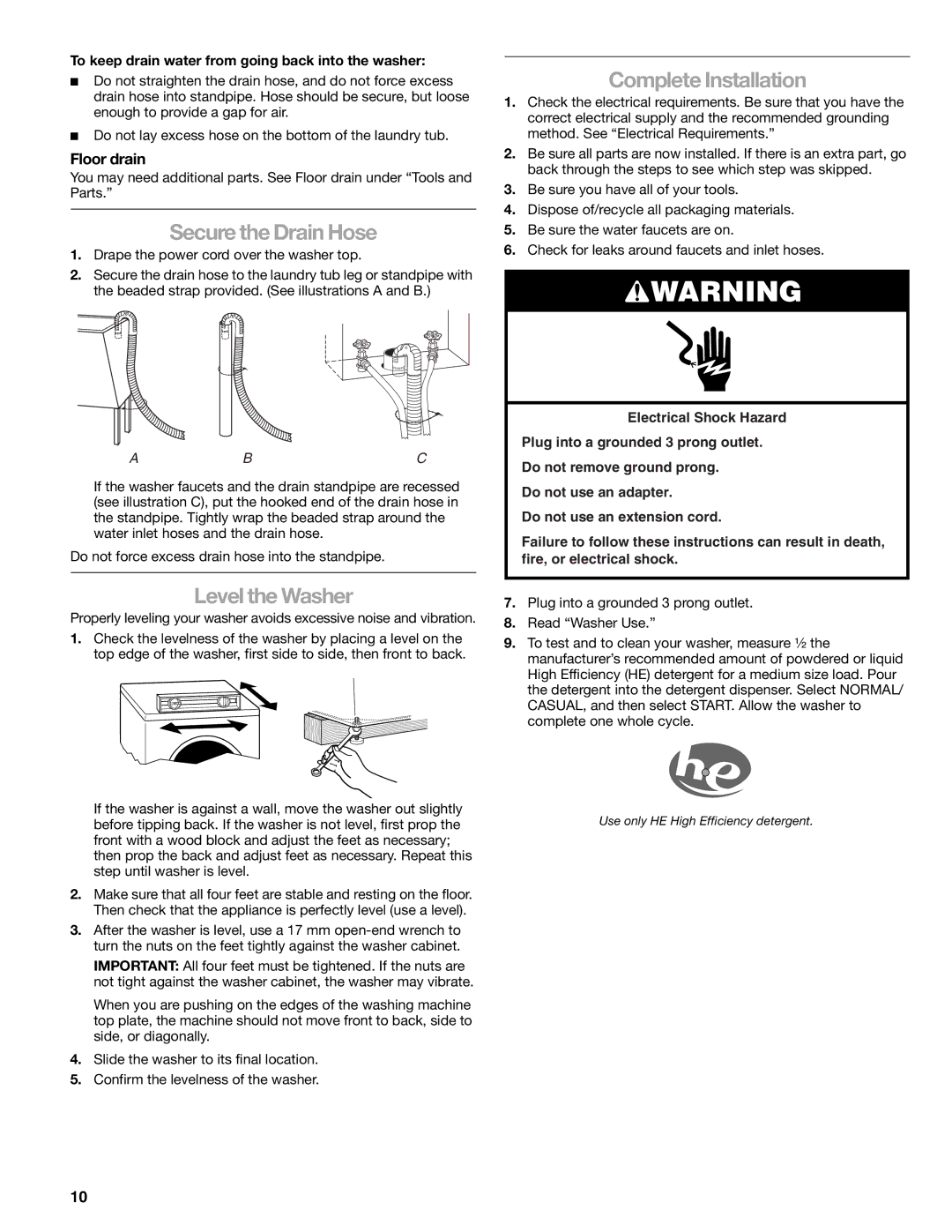110.4708, 110.4709, 110.4708 specifications
The Kenmore 110.4708 and 110.4709 are top-loading washing machines that stand out in the Kenmore lineup for their reliable performance and user-friendly features. Both models boast a robust design that ensures durability and efficiency, making them popular choices for households seeking dependable laundry solutions.One of the main features of the Kenmore 110.4708 and 110.4709 is their large capacity. With a 3.5 cu. ft. drum, these machines can handle sizeable loads, allowing users to wash more clothes in one cycle, thereby saving time and energy. The high-efficiency design also means that these washers use less water and detergent compared to older models, making them environmentally friendly options as well.
Both models incorporate a range of wash cycles to accommodate different fabrics and soil levels. From delicate items to heavily soiled work clothes, users can choose from various settings, including normal, perm press, and delicate. This versatility ensures that all types of garments receive the appropriate care during washing.
Another noteworthy aspect is the easy-to-use control panel. With straightforward dial settings and options, users can quickly select the desired cycle and adjust water levels without any confusion. The large lid also makes loading and unloading laundry effortless, contributing to overall user convenience.
In terms of technology, the Kenmore 110.4708 and 110.4709 feature an advanced agitator system that efficiently distributes water and detergent throughout the wash, improving cleaning performance. These models also come equipped with a dual-action agitator that helps to lift and separate clothes, enhancing their ability to remove tough stains.
Energy efficiency is another strong suit of these washers. Both models are Energy Star certified, meaning they meet strict energy efficiency guidelines set by the U.S. Environmental Protection Agency. This certification assures users that they are reducing their environmental impact while also saving on utility bills.
In summary, the Kenmore 110.4708 and 110.4709 models exemplify the perfect combination of capacity, versatility, and energy efficiency. Their durable construction, user-friendly controls, and advanced washing technology make them excellent choices for households seeking reliable and efficient laundry appliances. These characteristics not only improve the washing experience but also foster a commitment to sustainability, making them a smart addition to any home.

